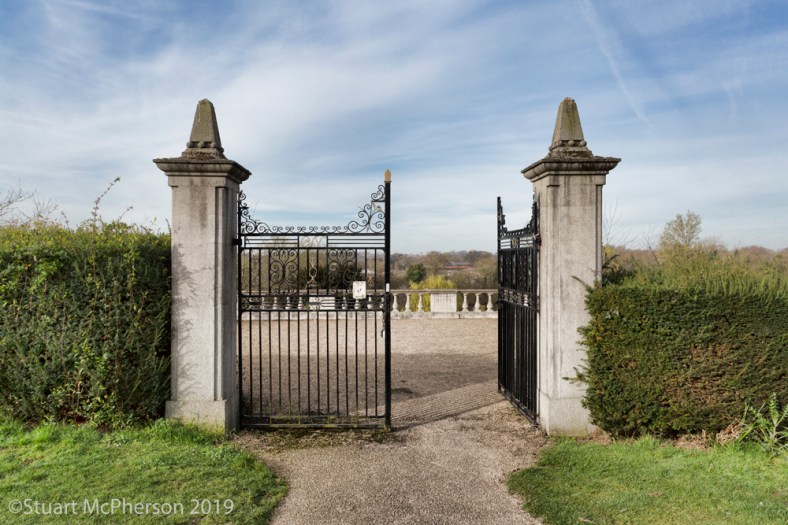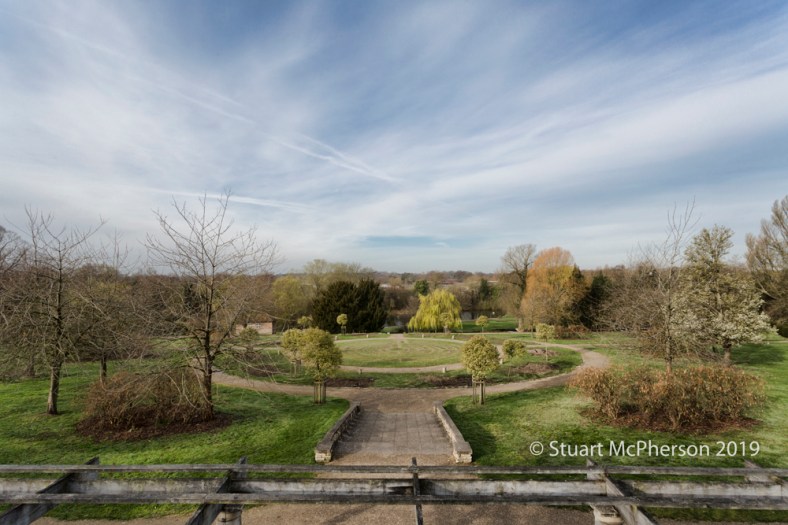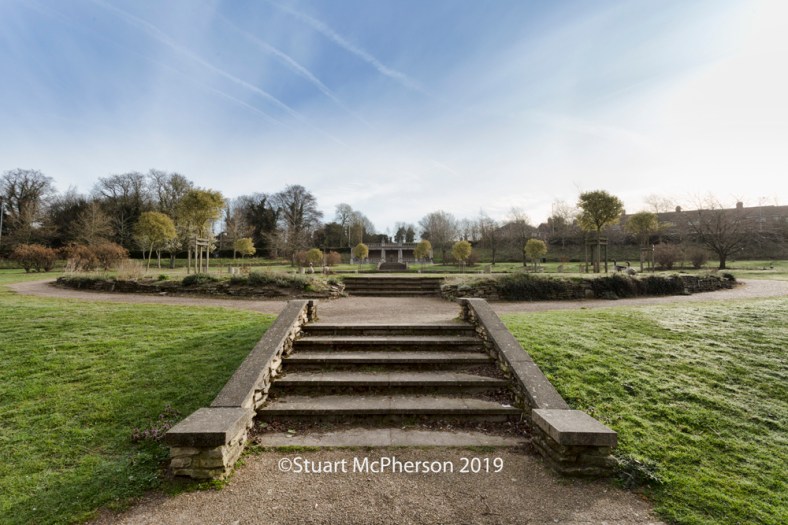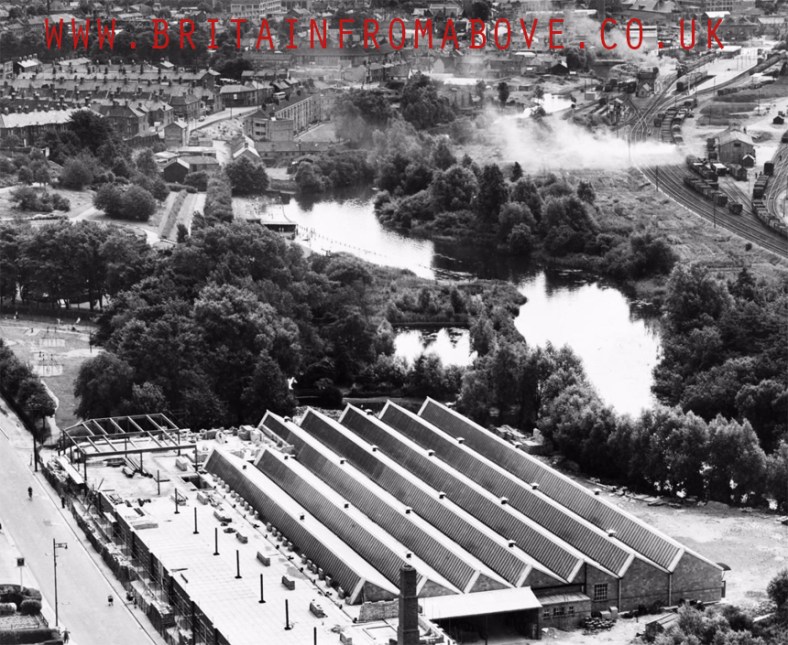
Wensum Park is a unique park for Norwich and is (and has always been) well loved by the generations of Mile Cross inhabitants.
Set on the slopes of the Wensum valley as its river snakes its way towards the City Centre, the top of the park commands a great view across Heigham from its highest point up by the infamous Drayton Road mini-roundabout and then drops away quite dramatically before dipping its toes (literally) into the cool and chalky waters of the Wensum.
It has everything a park should have: Swings for the kids, plenty of places to sit, some almost admirable architecture, wide open spaces, flowers, a paddling pool for the infants, an abundance of trees, plenty of wildlife, a river walkway, somewhere to go to the loo (if you’re desperate enough), plenty of history; and if you know where to look, some interesting secrets.
The park as it is now was built by a certain Captain Arnold Edward Sandys-Winsch, a chap I’ve written about before but I shall go into a little more detail about now. ‘Arnie’*, as he liked to be known was born in Cheshire in 1888 grew up to be a much-admired Landscape Artist, learning his skills whilst working under the well-known Town planner, Gardens planner and architect, Thomas Mawson. T.H. Mawson had obviously taught him well and his influence can be seen in all of the Norwich Parks built by old Arnie.
*I made that bit up and it’s silly. I will refer to him hereon as: ‘Sandys-Winsch’.
Sandys-Winsch’ career had to be put on hold when the Great War erupted across Europe, signing up for the Artillery before volunteering to become a Pilot for the fledgling RAF, or Royal Flying Corps as it was known then. Luckily he managed to survive and make it home again after the hostilities had ceased and in 1919 he became the Parks Superintendent for Norwich, a position he held for an admirable 34 years. His parks included Eaton Park, Heigham Park, Waterloo Park, Hellesdon Recreational Grounds (Sloughbottom), Mile Cross Gardens and of course Wensum Park.
Like some of his other parks in Norwich, Wensum Park was already a park of sorts, an open area by the river that had been bought by the City as far back as 1907. A swimming pool and wading area had been installed, along with a shelter but there were no real gardens to speak of. The area was bordered on it’s down stream side by a Tannery at Fuller’s hole and a large shoe factory on it’s upstream boundary, giving this open space a rather hemmed in by Industry kind of feel. This park of sorts wasn’t all that successful by the sounds of it, possibly because of the war, but by 1921 the area was being used as a tip.
You can see the area where Wensum Park was about to be built in this cropped photo postcard taken some time shortly after 1909 from the newly-erected viaduct over the M&GN at Dolphin. As you can see it looks little more than an steep-faced platform between St Martin’s and the river:

The un-cropped post-card above, in it’s wonderful entirety:

Sandys-Winsch and T.H. Mawson set to work with the plan of converting this riverside dumping ground into a beautiful Riverside Park fit for the roaring twenties. It took four years to be completed and like a lot of these types of projects in Norwich at the time it was completed with the use of a labour force consisting mainly of unemployed veterans of the Great War.
The park must have been a delight when it first opened its gates to the public in 1925. There was a play-park for the youngsters, a fenced-off paddling area in the Wensum for the brave, a massive duck pond connected to the Wensum complete with ornate footbridges, a large circular fountain lined with Brass frogs that sprayed water from their mouths, rows of trees and beautifully maintained plant-beds lining the many paths and walkways, a grand staircase leading down to the river from St Martins Road and some wonderful Ironwork gates through which to grant the citizens of Norwich access to their beautiful new park, all of which was overseen by the large pavilion and its roof-top terrace, where you could (and still can) stand and admire the view across to Heigham. Of course the view would have been a lot more interesting than it is today with a very busy Railway Terminus running straight through the middle of it all. On top of all this, work was also in progress to add an upgraded full size, open-air swimming baths in the slice of land wedged between between the new duck pond and the river.
The Brass Frog fountains:
![Wensum Park fountain view towards N Heigham [B164] 1931-00-00](https://themilecrossman.com/wp-content/uploads/2019/03/wensum-park-fountain-view-towards-n-heigham-b164-1931-00-00.jpg?w=788)
And an elevated shot in 2019:

The pavilion and fountain:
![Wensum Park fountain and shelter [B155] 1931-00-00](https://themilecrossman.com/wp-content/uploads/2019/03/wensum-park-fountain-and-shelter-b155-1931-00-00.jpg?w=788)
And from a similar position in 2019:

The duck-pond by the Wensum:
![Wensum Park lily pond with rustic bridge [B163] 1931-00-00](https://themilecrossman.com/wp-content/uploads/2019/03/wensum-park-lily-pond-with-rustic-bridge-b163-1931-00-00.jpg?w=788)
Beautiful original Ironwork on one of the gates. Note the initials ‘WP’:

One of the men employed by Sandys-Winsch to build his park was a WW1 veteran going by the name of Herbert Woodhouse, who’s grandson kindly sent me a few images of his grandfather at work during the Park’s construction. Herbert had managed to survive the (not-so) Great war even though he was one of the unfortunate troops to be gassed. Despite all of this and the comprehensive damage to his lungs he still managed to do this rather physical job and help complete the construction of this beautiful park.
Below we can see Herbert (far left) and some of his colleagues in this wonderful posed photograph, showing off parts to be used in the construction of the pavilion and staircases:

And pictured again below, hard at work constructing the pavilion:

Unfortunately not long after the Park had opened poor Herbert was to succumb to the invisible injuries of war and he sadly passed away due to breathing complications brought about by the long-lasting effects of being gassed out there on a distant battlefield, far away from his Norwich home.
It’s a tragic part of the tale but I also like to think that the park is a nice tribute to these veterans and after seeing these pictures and the actual faces of the people actually constructed it somehow makes these sandy-coloured structures a little more personal and I will now think about Herbert whenever I’m enjoying the park that he and his colleagues helped build for our City almost a century ago.
Pieces of stone that Herbert and his colleagues were posing with almost a century ago:

The Pavilion as it is, Spring 2019:

The affects of War still had a big part to play on this beautiful park and it wasn’t too long before the shadows of war were darkening the skies over Wensum Park. Parts of the park were dug up to have underground public air-raid shelters installed and not long after that bombs were to fall directly upon the park and its surrounding areas. The beautiful brass fountain was to take a direct hit, as did the duck pond which was to be altered in shape slightly by a delayed-fuse bomb that had landed, unnoticed in the shallow water. This bomb detonated the next evening, much to the annoyance of the ducks I imagine. The incomplete open-air swimming pool was also damaged and because of the prohibitive-costs needed to fix it and there being a war raging on, it was never actually completed. Worse than any of all that though were the human casualties in the nearby area. Some houses along St Martins Road overlooking the park (which can be seen in some of the images above) were completely destroyed by German bombs leading to some fatalities and a Mile Cross resident from Drayton Road was killed on his bicycle as he was pedalling down Drayton Road trying to get home and away from the terror. His son recalls in this fascinating and tragic article about how the Park’s Pavilion had to be used as a temporary mortuary for his father’s body. Another tragic part mentioned in those memoirs is how the man’s children found one of the pedals of their father’s bike laying in the gutter at the side of Drayton Road.
The park never fully recovered from the effects of War, the open-air pool was left to nature, becoming overgrown, unloved and eventually used as a spot to on which to dump the silt dredged from the Wensum (back when they actually used to dredge it). The damaged fountain remains were removed and never replaced and parts of the gardens around the duck-pond had the bridges removed, making them inaccessible. This didn’t stop the park from being a popular destination for the residents of Norwich though, with it’s paddling areas and still well-loved gardens and ever-grateful Duck population it never failed to draw a crowd in the summer months, remaining mostly like this until the 1980’s when I also used to regularly frequent it as a child. We spent a lot of our time in this park in the Summer months and would often pop into the fenced off parts of the Wensum for an extra swim on the way home from St Augustine’s Swimming Pool!
I remember on one particular afternoon a friend and I had decided to go for a swim, leaving our shoes and bags on the concrete steps leading down into the concrete-based paddling area. The floor used to be slimy and my friend didn’t like the feel of it between his toes so went back to get his shoes. He’d figured it was a nice warm day and that his trainers would soon dry out on the way home. What we’d both forgotten is that I’d hidden my Knight Rider digital watch in his shoe to keep it safe. How he didn’t feel it when he put his shoes on I don’t know, but I’ll never forget the look on his face when the short-circuiting watch emitted the scrambled sounds of the Knight Rider theme-tune in it’s death throes coming out of the end of his right trainer.
What’s left of the steps leading into the paddling bays, now minus their fences of course. We believed they were there to stop you wading out too far and being eaten by the shoals of massive Pike and Wels that we used to imagine lurking in the dark waters beyond:

Another memory I have from this era is that we used to hop over the temporary wooden fence that followed the treeline behind the paddling bays and into the area where the abandoned swimming pool had been buried with silt from the river. We didn’t know it then but this area was cordoned off for a reason; to allow the freshly-dredged silt to settle in the deep pool that we never realised was hiding below our feet. This area was a veritable treasure-trove for the young and inquisitive mind and we used to find countless animal bones, ranging from horns to jawbones sticking out of the silt. I had a collection of these bones in my bedroom for a few years and even took some of them to be examined by the Castle Museum. It was most likely that the thousands of bones had made their way into the river from the nearby tannery and were brought back to the surface when the river was dredged; dredged for the last time it seems.
The swimming pool mentioned above is still there, but it is well and truely buried in amongst the trees that now grow towering out of that fertile silt and the area has long since been opened up again. It is possible to walk from the former paddling areas, that have now been converted into a boarded river walk-way above the former steps, along the river bank and all the way through to the duck pond, although the ornate foot-bridge at the back of the pond where it connects to the Wensum via a crude dam has long-since gone. You can still make out parts of the pool here in amongst the trees, including the concrete boiler holders and a section of the pool’s edge protruding from the silt.
Slightly exposed pool edge, close to the river:

One of the remaining concrete boiler holders:

The abandoned pool can be seen in amongst the trees (centre of shot), just after WW2:

As I grew older, the paddling area slowly fell into disrepair. The river fences were removed and the City-end bay was partly invaded to make way for a nasty-looking (and smelling) storm drain. The crumbling steps of the up-stream bay were boarded over to create a raised river platform and the paddling area was no more. The park is now a shadow of its former self, the decorative walls are crumbling, the flower beds have long since stop being cared for and only essential maintenance is carried out by the City of Norwich which is a shame, but these are the effects of austerity and they’re only going to get worse before it gets better.
Remnants of the paddling area, taken from atop the recent storm drain:

That said, the park is not to be completely forgotten and hope is not lost; it has been registered as a Grade 2 Park and Garden on the English Heritage Register of Historic Interest and I’m hoping that as soon as we emerge from the lie that is austerity, these types of places will get funding they deserve once again and this old but much-loved park will get the full care and attention it deserves to help bring it back to the beautiful place it once was. In the meantime, the park is still managing to lure thousands of people from all over the City out into the open and is always rammed on a Summer Weekend, proving (to me at least) that it still retains some of its original charm and that it is still a place to be celebrated. This long-serving park can be seen as a testament to those hard-working veterans who built it for us almost 100 years ago.
Thanks for reading,
Stu
I am 91 years old i was taught how to swim in the wensum swimming pool, my older brother left his boots on the side while he paddled,in the paddling pool and somebody stole them, somebody brought him home on a bike with my brother sitting on the cross bar!
there used to be a stall selling teas at the entrance to the park next Edward & Holmes she factory where my father worked. A lovely park it should be restored to,its former glory. Mrs, C.
LikeLiked by 1 person
Hi Pauline,
Thanks for sharing your memories. Stealing boots, now that is very Mile Cross!
LikeLike
Do you mean in the river paddling area or in the open air swimming pool?
LikeLike
Great blog post about Sandys-Winsch’s work. So good to see those previously unpublished photos. Reggie.
LikeLiked by 1 person
I grew up on Magdalen Street and it was definitely always worth the walk to Wensum Park – it had the best play ground ever as far I was concerned!
As I grew older I began to appreciate the faded beauty of the park and understand what it must have looked like in its heyday. I visited again recently and found that things have changed again – the zodiac circle being a modern addition.
I’d love to see money spent on the park but fear it will have to wait a while yet. Great article and I loved the original photos Thanks 😊
LikeLiked by 1 person
1928 OS map shows the open air swimming pool. Are there any dates for opening/closure of this, one of Norwich’s several vanished pools?
LikeLike
Fascinating; particularly the links with the two world wars. I’m one of the thousands who learnt to swim in the fenced off river section. My friend Stephen was not allowed to take his rubber dinghy to the nearby Dolphin bridge in case he drowned. Sadly he died a few years later in a motorcycle accident on the ring road.
LikeLiked by 1 person
Thanks for writing this – very interesting and well written.
LikeLike
Hi Stuart, I produce youtube videos (Lost Norwich) with the aim of raising money to replace the horribly faded green plaques around the city. I’ve been asked to do a video about Wensum Park and wonder if you could give me permission to use the postcard above with the railway on it. It would be great as a scene setter. Regarding the abandoned pool, is this separate to the fenced off area of the river.
Thanks in anticpation,
John Atkins
LikeLike
Hi John, the postcard isn’t mine, but I should imagine it’s well out of copyright by now.
LikeLike
I remember playing in wensum park in the late fifties with my brother s and sisters one of my sister lives in the USA now she is over here at the moment so we took a stroll down memory Lane I was sad to see the small paddling area is not there now and I could not remember the bridge or the toilets do you know if they were there in the fifties
LikeLike
There were more bridges in the fifties but Rome in different positions. The toilet block replaced the old changing rooms before the 80’s when I started to visit.
LikeLike
In the 50’s remember those steps into the paddling pool (that always felt slippery underfoot) and the rail on top of the wire netting that separated the pool off from the river, the fish that swam freely, and my parents sitting on the grass keeping an eye on me. Two tales my father recalled to me were that he had to dash fully clothed into the water to rescue me from drowning when my older cousin who was accompanying me panicked when I slipped and fell face down, and the second when he was on the wooden bridge that lead into the paddling pool area and a child slipped off the bridge and into the water and he dashed to grab the child and make sure it was safe: his name was Peter Loughlin.
LikeLiked by 1 person